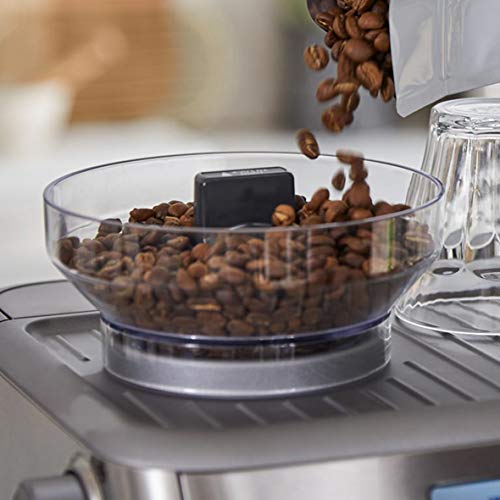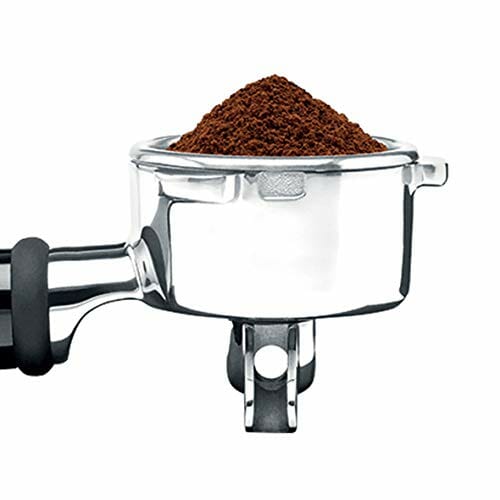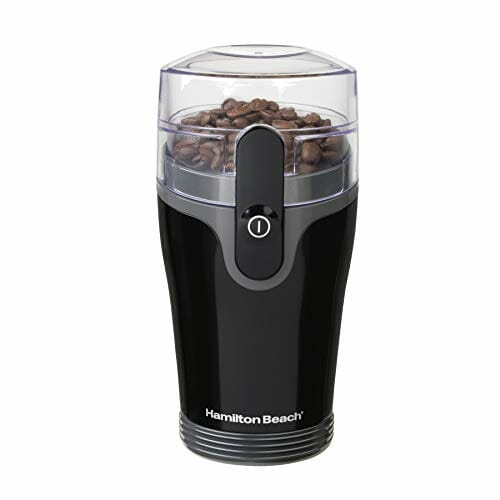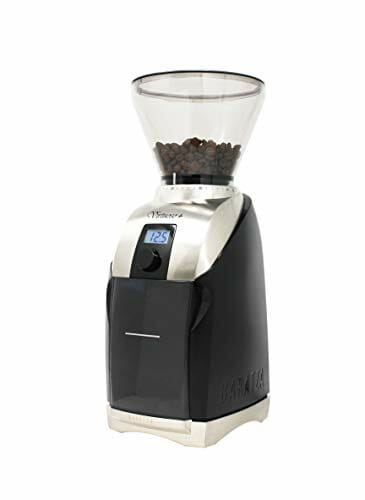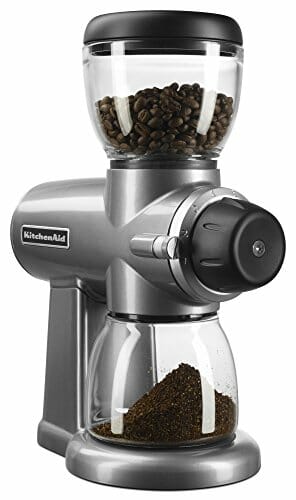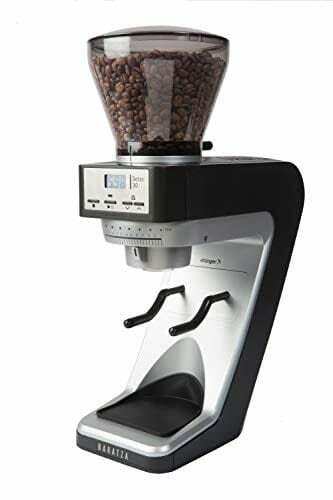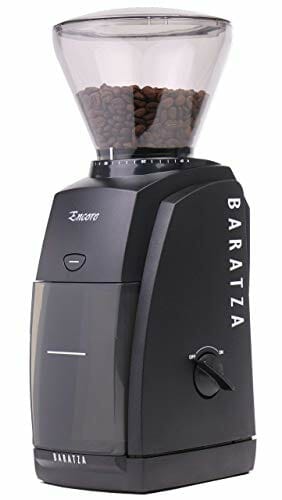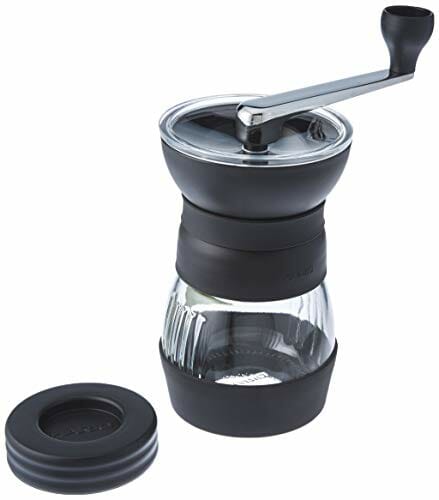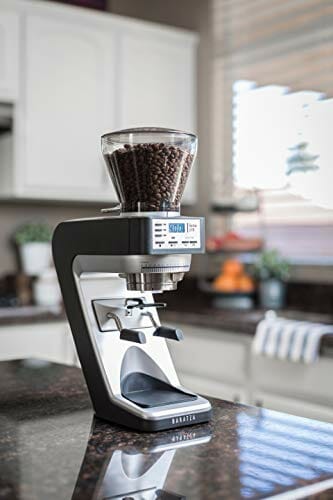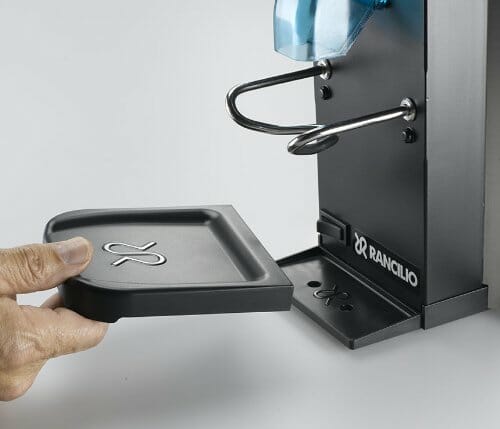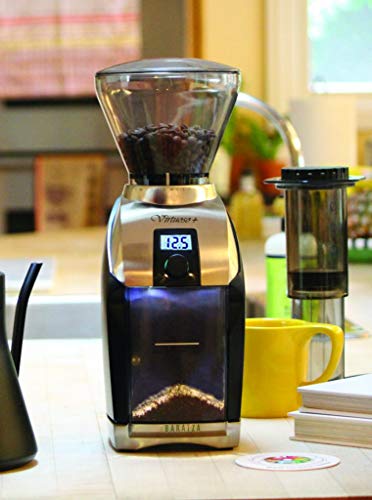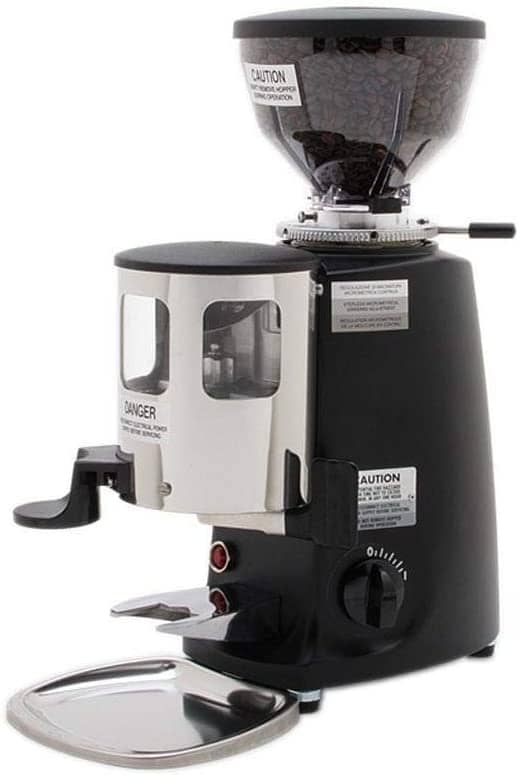Be honest with me, does the coffee you make suck?
Okay, maybe not a lot but does it suck a little bit and you still enjoy it but feel like there may be room for improvement?
If you find the quality of your coffee lackluster, try making adjustments from the bottom, the coffee grounds.
And the key to getting the grind going is having a quality coffee grinder. There are many types of coffee grinders out there but some are definitely better than others.
In this article, I will guide you through 14 popular types of coffee grinders in the market, their pros and cons, along with some actual product suggestions to ease you into the game of grinding.
Why Is It Important To Get The Grind Right?
Have you ever wondered whether you can brew coffee beans without grinding them?
Technically, the answer is yes.
But then most of the flavorful and aromatic compounds can’t be unleashed with the usual relatively quick 4-to-6-minute long coffee brewing methods.
That’s not to mention the sniper espresso-making technique that usually takes only 30 seconds to pull a one-shot-one-kill.
So the only applicable method for whole coffee beans you’re looking at here is making Cold Brew coffee, which requires at least 12 hours of steeping to effectively extract the flavor compounds inside the very coarsely ground coffee.
The bottom line is grinding coffee is essential to pull out the coffee flavors and aroma.
Because by grinding, you’re breaking each coffee bean into many smaller pieces.
This ultimately increases the surface area, enabling better coffee-to-water contact for better and quicker extraction.
But not just any smaller pieces of coffee beans AKA grind size would do. And don’t worry. I’ve compiled the ultimate coffee grind chart to help you through this dilemma.
Each coffee brewing method can call for a different grind size, otherwise, the coffee can come out under, over, or unevenly extracted.
If you’ve been brewing coffee for a while now, you must have encountered these terms?
They’re some of the reasons why you need to get the grind size right for the sake of your brew. You can’t half-ass beauty.
Under-Extraction
The most obvious sign when your drink is under-extracted is the acidic, sour, and very sharp taste.
Since the coffee beans and the hot water haven’t come into contact properly, the water hasn’t had the opportunity to break down and draw out the sugars, oils, and interesting notes for a complex flavor experience.
So all you taste is very intensely sour to the point of it being salty dark water.
Under-extraction can happen when you use coffee beans that are too coarsely ground for the coffee maker, leading to not enough coffee-to-water contact.
Over-Extraction
Unlike under-extraction, over-extraction leads to an overwhelmingly bitter taste yet still unsatisfyingly thin and hollow rather than fulfilling.
This is because the excessive contact between the coffee grounds and the hot water leads to an over-extraction of flavors and oils.
What you taste is way past the sweet sugars and aromatic and complex notes.
You’ve entered the realm of the bitter ends inside the coffee beans, but not the dark chocolate, nutty, and woody type of bitter profiles AKA the good kind.
You’ve also uncovered the undesirable tones that are overly bitter yet empty and offer no more value to the cup.
Unfortunately, they overshadow and mute all of the other favorable flavors, so the previous extraction efforts pretty much went down the drain.
Over-extraction can happen when you use coffee grounds that are too finely ground. This means there is more surface area for the coffee beans to flaunt and it takes the water a longer time to travel through the ground bed.
Uneven Extraction
Okay, so now you know to use the right grind size.
But, once again, repeat after me: You can’t half-ass beauty.
The goal isn’t getting SOME coffee grounds the right size, the goal is getting ALL of the coffee grounds the right size.
A consistent and even grind gives a more consistent and even extraction, resulting in a more balanced cup of coffee.
Obviously, you can’t expect the same quality from a batch of coffee grounds with half coarsely ground and half finely ground.
And some coffee grinders can give you a more consistent result than others, which we’ll discuss later when comparing the various types of coffee grinders.
Why Should You Grind Your Own Coffee Using A Coffee Grinder?
Does that mean, as long as you use the right grind for the coffee-making method, you’re good to go?
So pre-ground coffee gets a free pass?
Bestie, I’m afraid to tell you this but the answer is no.
And there’s a legit reason why other specialty coffee experts would advise you to grind your own beans too.
If you read my article on how to make the perfect cup of coffee, you’d know that pre-ground coffee speeds up the degassing process of the coffee beans. So they become stale a lot quicker.
The key to resolving this issue, especially for home baristas who don’t brew a large batch often, is buying whole coffee beans and grinding them right before brewing to best preserve the freshness of the coffee.
Freshness can significantly improve the quality of your cup of Joe.
So, since you’re already here looking to learn more about coffee grinders, don’t stray off this path and get yourself one and grind your own beans to enhance your homebrew experience.
What Are The Different Types Of Coffee Grinders?
Now, let’s get to the main course: What kind of coffee grinders are there?
The two most common types of coffee grinders that you would encounter while on the hunt are most likely the blade coffee grinders and the burr grinders.
These two differ from each other largely in terms of their construction and grinding mechanism.
Let’s take a closer look below.
Blade Grinders
Think of the blades of the blade grinders like those inside a food blender or a food processor.
They contain (usually 2 pieces of) metal blades that rotate at a high speed to chop up the coffee beans into smaller pieces.
And that’s the limit to what they can do. They simply cut up the content into uneven pieces of coffee grounds.
So one issue you’ll definitely encounter when using blade grinders is uneven extraction, affecting the overall taste and brew quality.
You can’t adjust it to produce any particular grind size either because there are essentially no grind settings. The longer you keep at it, the smaller the grind size becomes, just like a blender.
In the end, you’ll end up with a randomized version of coffee grounds containing both “boulders”, larger ground coffee particles, and “fines”, smaller ground coffee particles.
Metal blades rotating continuously at a high speed can also generate heat from friction which is transferred to the coffee beans as well.
Overheating coffee beans may lose some of the fine coffee flavors and oils and possibly acquire an unpleasantly burned taste.
So make sure to pause often to prevent the heat waves from faking the beans out.
That doesn’t mean they don’t have any perks, however.
Other than the extreme ease of use, if you’re on a very low budget, blade grinders can be an attractive pick with prices on the lower end. Think less than 20 bucks.
But you get what you pay for. They aren’t usually built to last with cheap materials, although some may be more durable than others.
Take this advice from a coffee aficionado: Just don’t buy a blade grinder unless you have a really really tight budget. The tradeoffs aren’t worth it if you’re looking to improve your coffee experience.
Pros
- Very straight-forward and easy to use but can take estimation and pacing
- Very affordable
Cons
- No grind settings
- Inconsistent grind size
- More heat buildup
- Not durable
Burr Grinders
Moving on to the next popular category: What is a burr coffee grinder?
This device has 2 abrasive surfaces revolving against each other as they grind the coffee beans.
The closer the distance between the surfaces is, the finer grind you can achieve. That’s basically how adjusting the grind settings work on a burr grinder.
So, unlike the blade grinders, you get to have full control over how fine or coarse the grind goes with ease.
And due to the difference in the mechanism of the grinding process, burr grinders are capable of producing a much more consistently uniform batch of ground coffee.
Naturally, the coffee compounds are extracted more evenly for a more balanced cup of coffee.
And rather than utilizing cheap metals, you’ll most likely find either stainless steel or ceramic burrs, which are a lot more durable and have better blade sharpness for grinding coffee.
I’ll go more into details about these two coffee grinders in the subsection below for a more in-depth analysis.
But for all of those perks, you do have to pay a higher price, which is only fair, right?
Pros
- Easy to use
- Superior grind consistency
- Adjustable grind settings
- Durable and sharp blades
Cons
- Not cheap
Ceramic Burr Grinder
Hmm… With sharp pieces of coffee grounds flying around as you grind coffee beans, it’s not unusual to think that the seemingly vulnerable ceramic material doesn’t sound ideal for a grinder.
Well, the rest of the home-coffee grinders market would beg to differ. In fact, ceramic burr grinders are very popular in the market for their insane durability.
Melitta, a leading coffee brand in North America well-known for its coffee filters and other coffee gear, even went as far as saying that ceramic coffee grinders never go blunt.
That pretty much suggests that you can invest in a very quality grinder to meet your coffee needs for the rest of your life. Well, as long as they don’t go wrong in any other area.
But, you can sleep well knowing that you never have to spend a day sharpening the blades of your ceramic coffee grinder because they’re here for a good time and a long time.
So, what else does this beast of a coffee grinder have to offer so I can talk you into buying it rather than getting a less-than-satisfying blade grinder? No offense to blade grinder users out there though. #loveislove
I mentioned the burning-up issue as one of the cons of blade coffee grinders previously.
Ceramic brings a trump card to the table as they tend to run cooler than metal grinders. This is simply because it’s less thermally conductive.
Less heat equals better preservation of the original coffee taste in the form of freshly ground coffee. This ultimately leads to a higher-quality home-brewed cup of Joe.
Another perk to add to the mix is that ceramic coffee grinders generally are quieter. So you don’t have to worry about waking up the rest of the house in the early peaceful hours.
Though this seems like the best coffee grinder, Hannah Montana said “Nobody’s perfect” and ceramic coffee grinders are sadly not out of the equation either.
The general rule is the more value they can provide, the more expensive they are to produce and sell as. So do expect a steeper price tag compared to the lesser coffee grinders.
And the material vulnerability I mentioned earlier can pose a problem too.
But they are more likely to become chipped due to contact with a foreign object rather than coffee beans themselves. So make sure to check whether any lost boys wandered in when you prepare the coffee beans.
Overall, this burr grinder is still a great catch, IMO.
Pros
- Lasts longer than your ex coffee grinder
- No need for sharpening
- Less thermal conductive
- Quiet
- Popular as home coffee grinders
Cons
- Not cheap
- Can chip due to foreign objects hiding among the coffee beans
Stainless Steel Burr Grinder
Another popular material for burr grinders is stainless steel. You mostly find these in commercial settings rather than as a home barista’s best friend.
Compared to the ceramic material, stainless steel burr grinders are definitely more sturdy, hence, less prone to chipping from accidentally grinding an object that doesn’t belong.
Stainless steel burr grinders are also much more affordable as it costs less to produce them. But that comes with a price.
They’re more likely to become blunt and call for sharpening once in a while to keep the coffee grinding output in tip-top quality.
The blades may also be not as durable, so they can’t be your ride-or-die like the ceramic burr grinders.
There can also be a bit of a risk of heating up from grinding coffee beans, though to a lesser extent compared to blade grinders. Stainless steel is more thermally conductive than ceramic after all.
Overall, if you can’t afford a ceramic burr grinder, a stainless steel burr grinder is a good alternative.
Pros
- More affordable
- Less prone to chipping
- Popular as commercial coffee grinders
Cons
- May not last as long as ceramic burr grinders
- Needs sharpening once in a while
- Potential heating issue
Flat Burr Grinder
Aside from materials, burr grinders can also differ from each other in terms of shape.
Each shape can be intended for a different purpose so the resulting grinds that they produce are definitely not one and the same.
Burr grinders typically come in 2 shapes: flat and conical.
So, what’s a flat burr grinder?
It contains 2 grinding rings with angled teeth lying horizontally flat on top of each other so that they are parallel.
And the further they are from each other, the coarser the grind and vice versa, like I’ve previously explained.
This helps the coffee grinder produce very uniform particles, which is a wonderful thing because our goal is to brew an evenly extracted batch of coffee.
But it’s not suitable for all brewing methods, however. Learning to become a coffee aficionado isn’t always a straight line as the same coffee rule may not be applied to all nooks and crannies.
While flat or wheel burr grinders are great for making a classic black cup of drip coffee or French Press, pulling an espresso shot calls for a different grind that the conical burr grinders are just naturally better at. I’ll go into this when the latter takes the stage.
If you want to push it with the flat burr anyway, go for a finer grind size than you normally would or extend the brew time for a bit longer for better espresso extraction.
Another thing to note is, due to the grinder’s construction, when the beans fall and meet the sharp horizontal surfaces, flat burrs grind coffee and send them flying sideways (a 90-degree turn).
This means the coffee grinder may retain some coffee grounds. And if they’re left there until the next time you pull out the coffee grinder, they can become stale and blend in with the new batch of coffee.
And you already know my stance on using grounds that aren’t fresh to brew coffee. You’ll definitely notice a subtle if not obvious decrease in the quality of the cup of Joe.
But just keep an eye out for flat burr grinders that don’t retain much grounds and you should be fine.
Additionally, compared to conical burr grinders, the flat burr also runs at a higher RPM (revolutions per minute) to ensure all of the beans are ground properly and consistently.
This means there’s likely more friction and heat buildup and more noise generated during the coffee grinding process.
The better grind uniformity also means the flat burr grinders generally cost more than conical burr grinders. Oh well, there are trade-offs for everything.
Pros
- Amazing grind uniformity, ideal for drip and French Press coffee
- Fast
Cons
- More pricey
- More ground retention
- More heat buildup
- More noise
Conical Burr Grinder
Here comes a detailed lesson on the conical burrs.
A conical burr coffee grinder is less of a textbook definition of burr grinders. It also has 2 burr surfaces, but one is inside the other.
The outer burr is a hollow ring with angled teeth, while the inner burr sitting inside is a conical piece with 5 twisted angled teeth.
So, on conical burrs, the coffee grinding action happens vertically as the beans come in between the two surfaces, rather than horizontally like the flat grinders.
This means the conical burr grinder gets a bit of help from the gravity pull of mother Earth, allowing it to run at a lower RPM to guide the beans through and grind them.
The result is less ground retention, heat buildup, and noise. How neat is that!
The construction of the conical burr also allows it to produce dual-sized grounds, both larger and smaller particles, rather than a single uniform size. This type of grind is more suitable for brewing with the espresso machine.
The small grounds restrict the water flow while the larger grounds become more saturated during the extremely short brew time. Ultimately, a balanced shot of espresso is born.
A less consistent grind means the conical burrs are priced cheaper in the market as well. So if you’re one of the espresso coffee lovers who intend to make full use of their espresso machine, this is it.
Pros
- More affordable
- Less ground retention
- Less heat buildup
- Less noise
- Can produce bimodal ground particles suitable for making espresso
- Generally more versatile and forgiving
Cons
- Less grind uniformity
Electric Grinders
Once you’ve had your pick of a grinding device based on its grinding mechanism, the next question is: How do you want it operated? By electricity or manually?
An electric coffee grinder is powered by electricity (like duh!) so you can expect convenience and speed to be part of the package.
If you get an electric burr grinder, all you have to do is put the beans inside, select a grind setting, and turn it on to let the machine do what it’s born to do. Easy-peasy-coffee-grindy.
An electric blade grinder may call for a bit more effort as you have to pace yourself to prevent generating too much heat and check the grind size. Still, minimal arm lifting is required to get the job done.
The general advice for anyone browsing electric coffee grinders, electric burr grinders, specifically, is to invest in the higher-end ones for better durability, more consistent grind, better precision and control, and more convenience with a larger range of grind settings.
The Baratza Encore, which is one of the best coffee grinders IMO, has an insane range of 40 different grind settings.
his electric grinder is capable of satisfying all your coffee needs, from the classic drip coffee to French Press, Pour-Overs, and other automatic brewers).
Cheaper electric grinders just aren’t worth your time as they’re likely made of low-quality materials that don’t last long and produce disappointing results.
Pros
- Convenient
- Fast, especially for large batches
- Durable
Cons
- The better the quality, the steeper the price
- Needs electricity
- May be noisy
Manual Grinders
Hmm… We have electricity now so why would we go back to using manual grinders.
Is this a hipster thing? No, the manual grinders have much more value to offer than just a hipster trend.
The manual coffee grinder is actually well-loved by the coffee connoisseur for the complete control you have over the grind to make it as coarse or as fine as Turkish coffee grounds.
Though it takes quite a bit of arm exercise, you’ll be happy to know that manual grinders are much cheaper and more accessible than their electric grinders counterparts.
The grinding of a manual coffee grinder is also a lot quieter.
And you can take manual coffee grinders anywhere to use even when you’re off the grid. This means freshly brewed coffee isn’t impossible when going camping.
If manual coffee grinders are your call, check out my recommended manual coffee grinders.
But electric or manual grinder, remember to get a burr rather than a blade. You already know why.
Pros
- Complete control
- Cheap
- Quiet
- Save you some electricity bill
- Can be used anywhere
Cons
- Manual work required
- Might take some time, especially for a large batch
High-Speed Grinders
Coffee grinders can also differ from each other in terms of the grinding speed due to the motor they’re equipped with.
High-speed grinders are usually flat burr grinders rather than conical, as you can probably guess from the higher RPM.
High-speed grinders are capable of producing more consistently uniform coffee grounds as the two discs spin faster.
But that also means more heat is generated during the process, affecting the quality of the beans.
And the powerful motor that high-speed grinders utilize also cost more than a low-speed motor.
Pros
- Uniform grind
- Fast
Cons
- More expensive
- More heat buildup
- More noise
Low-Speed Grinders
You can probably tell that most low-speed grinders would be conical burrs with lower RPM.
Due to its shape construction, a lower speed is more suitable, though you may still find high-speed conical grinders out there.
Though these automatic burr grinders can’t produce grinds as uniform as the high-speed ones, they cause less heat buildup and noise. Not to mention the cheaper price tag.
Pros
- More affordable
- Less heat build-up
- Less noise
Cons
- Less consistently uniform grinds
- Not as quick
Direct Drive Grinders
Direct drive grinders are basically grinders that connect to their motor directly, so the burrs would run at the same speed as the motor.
Direct drive grinders are usually low-speed grinders, so expect little to no heat buildup and noise.
But they’re more typically industrial machines rather than home grinders, very high-end.
Pros
- Very durable
- Little heat buildup
- Very quiet
- Industrial machines
Cons
- Expensive
Gear Reduction Grinders
Gear reduction grinders are high-speed grinders that come with a gear reduction system to lower the speed of the burrs.
The burrs would run at a slower speed than the power motor.
This helps the grinder last longer, operate more quietly, and generate less heat than normal high-speed ones.
Pros
- More durable
- Less noise
- Less heat buildup
Cons
- Noisier than direct drive grinders
Dosing Grinders
You can probably tell the function of this grinder by its name. Yes, it can dose.
Dosing grinders can collect all the ground coffee into a round coffee ground container sitting in front of the grinder.
The ground coffee container or doser has six equal sections. Think of a pie cut into 6 equal parts.
So it basically goes like this: The coffee beans are in the bean hopper. Once they’re ground in the chute, they’ll fall into the doser.
You may use a handle or a lever to rotate the sweeper inside the doser until a section moves to the front where the exit hole is to dispense the right amount of coffee (a dose) into the receptacle like a portafilter, ready to be brewed.
Does the word “portafilter” ring any bell? Ding, ding, ding! This coffee grinder is ideally used for espresso machines as they often require a certain amount of dosage to pull a shot, usually around 7g of finely ground beans.
If there’s any excess ground, you can easily place the portafilter on top of the coffee ground container and wipe it off and it’ll fall back in there waiting for the next brew.
With many dosing grinders, you can easily adjust the dosage so don’t worry too much.
Overall, since you don’t have to measure and grind the right amount of coffee each time, it’s definitely convenient for brewing a high volume of coffee, especially at commercial coffee shops.
Grounds spillage is also not a problem as long as you don’t pull the lever or handle too quickly which can cause the sweeper to move and send the grounds flying sideway.
There is also less of a risk of grind clumping.
However, they may trap some grounds in there and can be a bit difficult to clean.
And remember to pick a good coffee grinder with good dosage precision for an optimal coffee-to-water ratio.
These tend to be more expensive.
Pros
- Convenient, especially for brewing drinks that need high precision like espresso and in high volumes
- No ground spillage
- Less clumping
Cons
- Grind retention
- Can be hard to clean
- Costly
Non-Dosing Grinders
And non-dosing grinders don’t have the function I mentioned above.
So you have to add the right amount of grounds to be directly dispensed into your brewing basket.
But that means there’s less grind retention or excessive grounds due to careful planning. And you’ll always get the freshest batch of grounds.
However, they’re more likely to have ground clumps and spillage on the counter upon dispensing.
Pros
- More affordable
- Less grind retention
- Less excessive grounds
Cons
- Less convenient
- May have clumps
- Can cause spillage
To Wrap Up
So, what type of coffee grinder is best?
We don’t know the right coffee grinder for all coffee drinkers due to varying personal preferences and budgets. But whatever you do, get a burr rather than a blade and you’ll thank me later.


